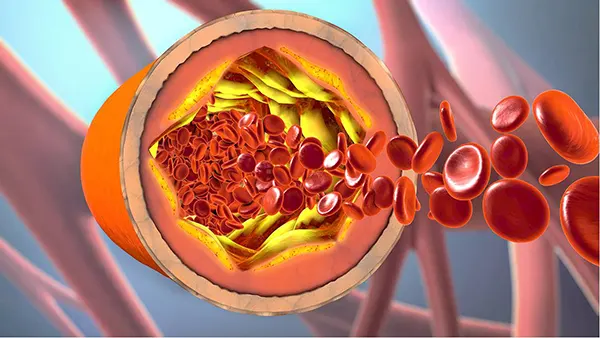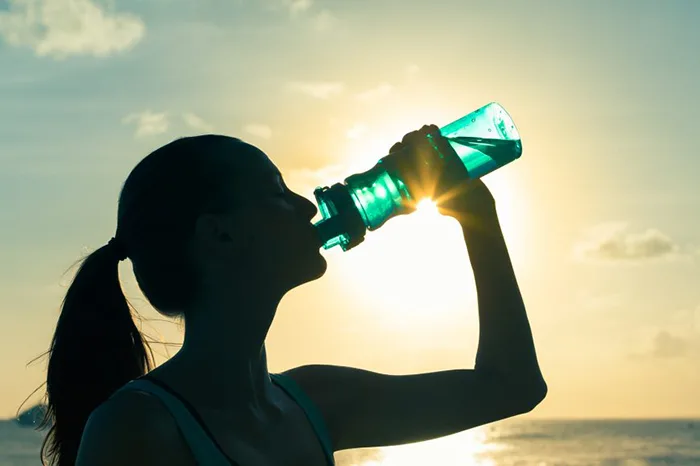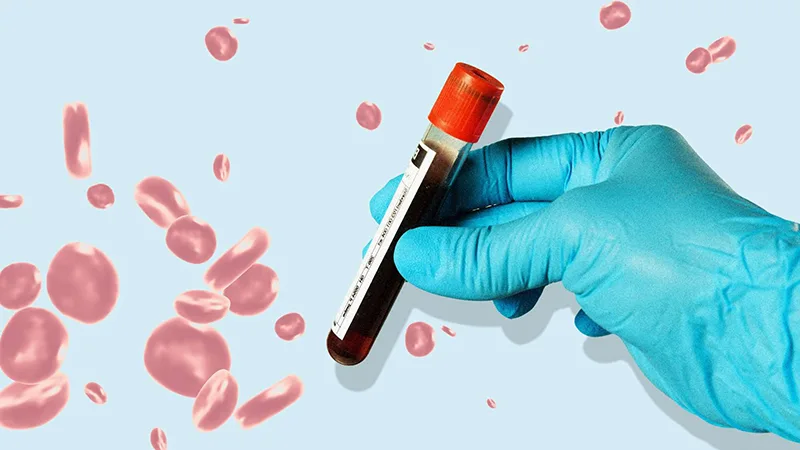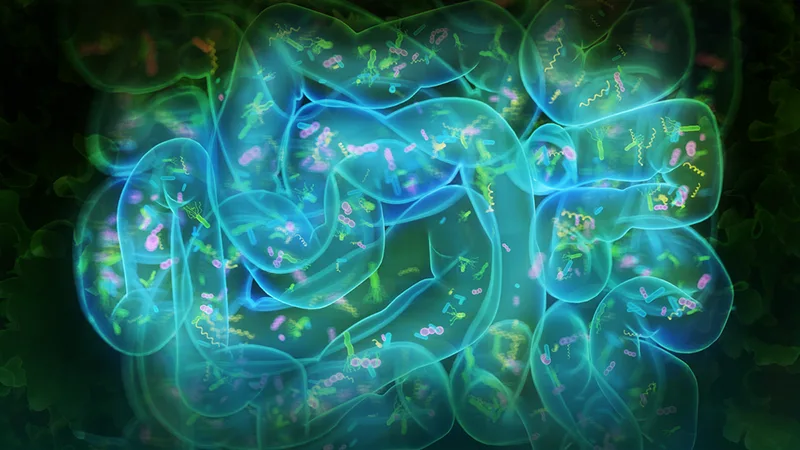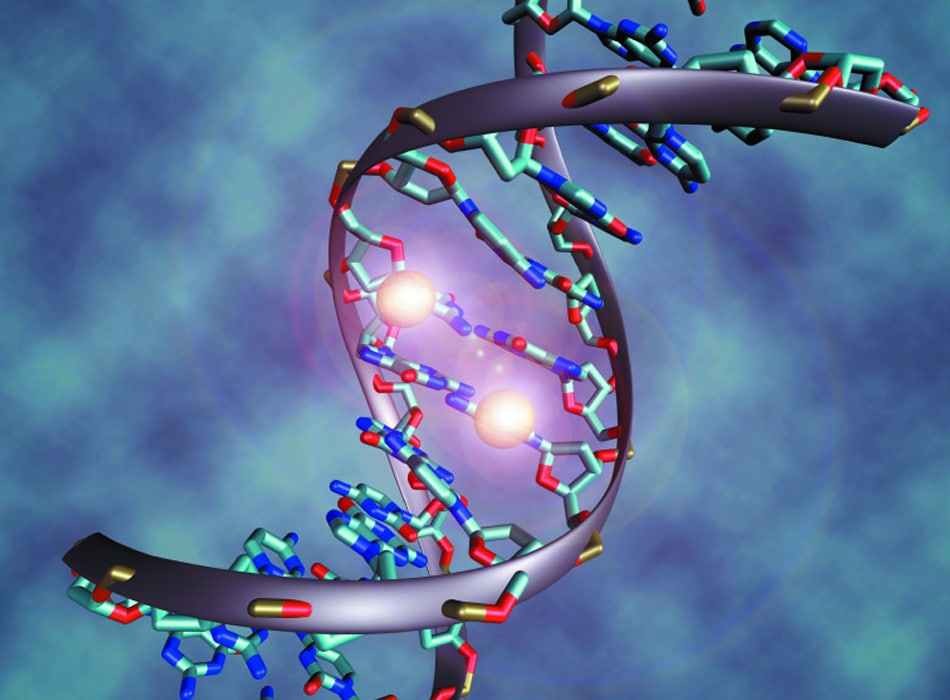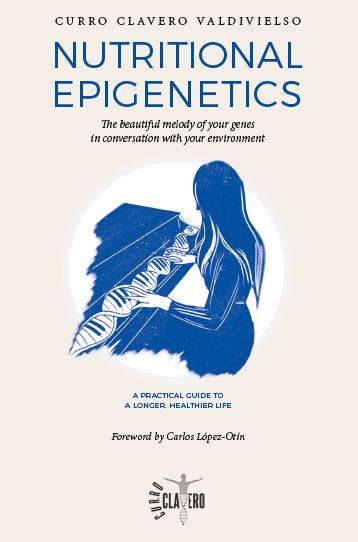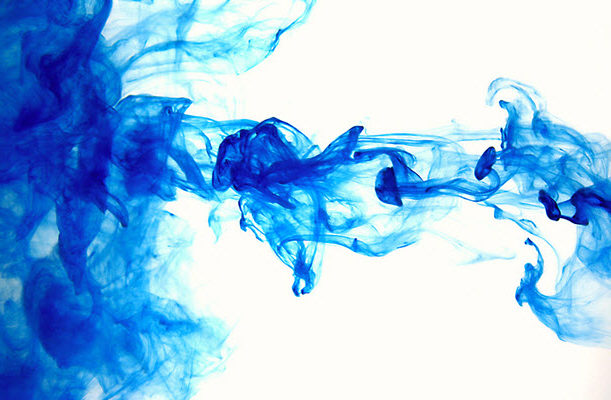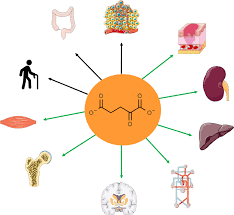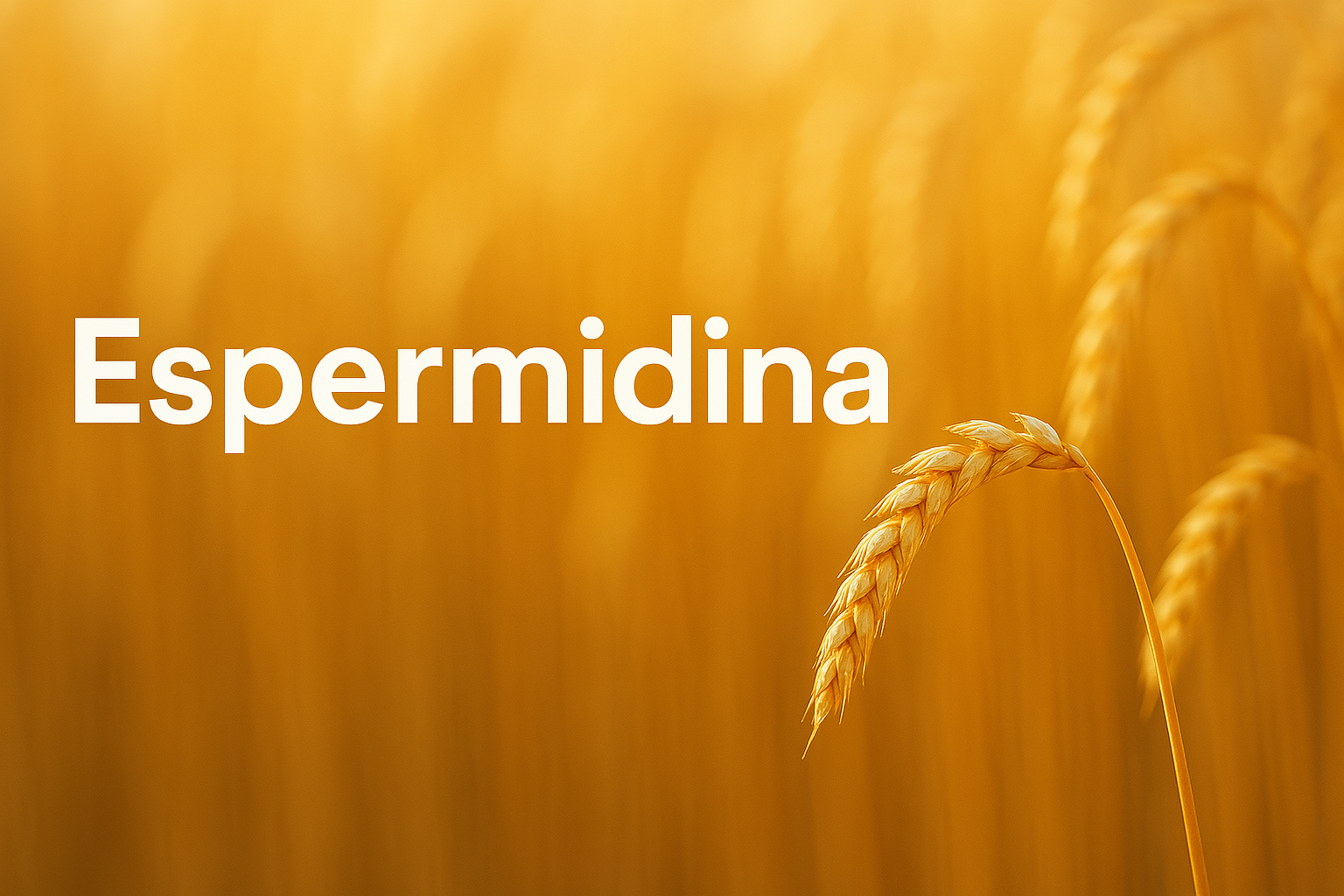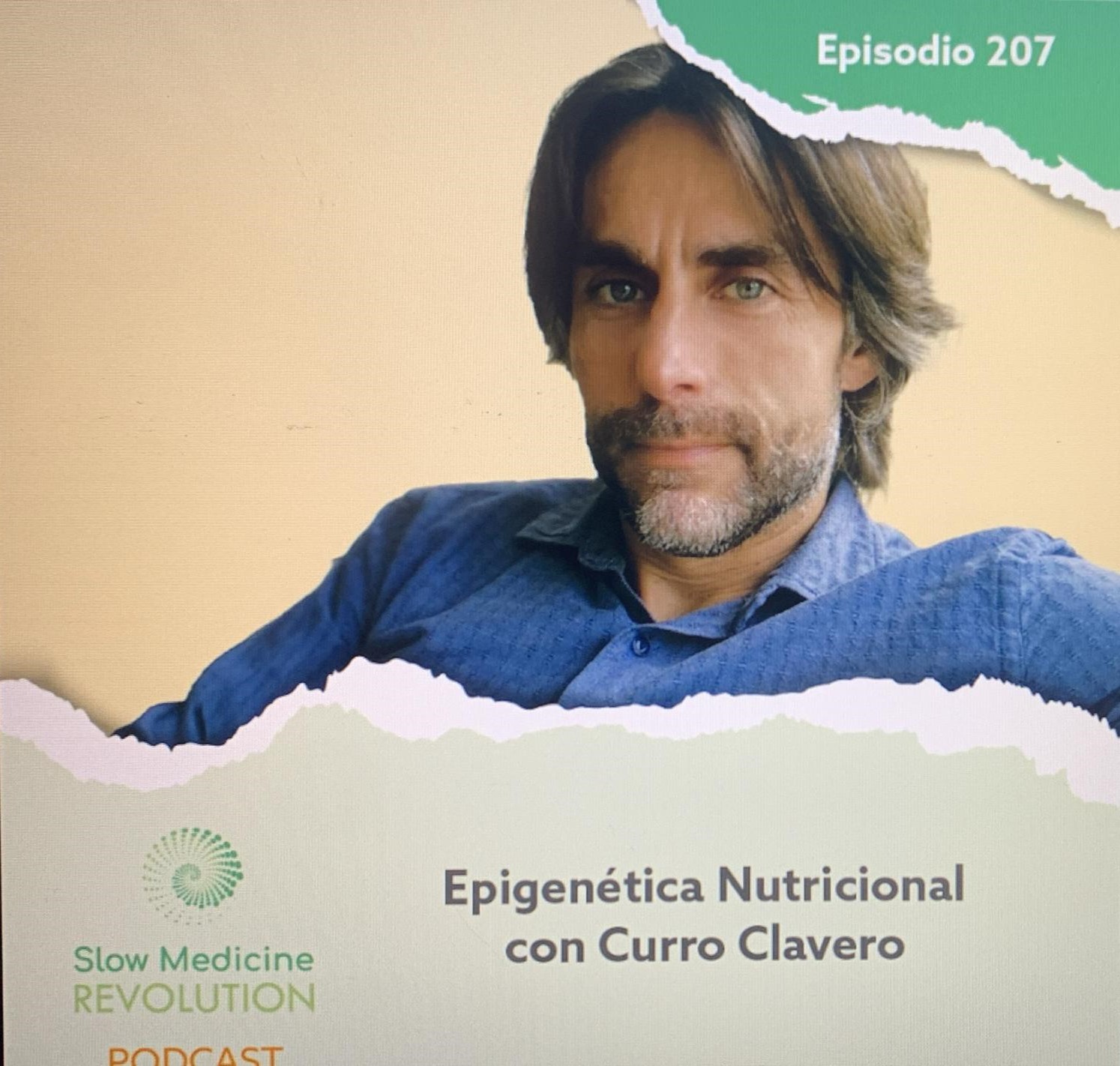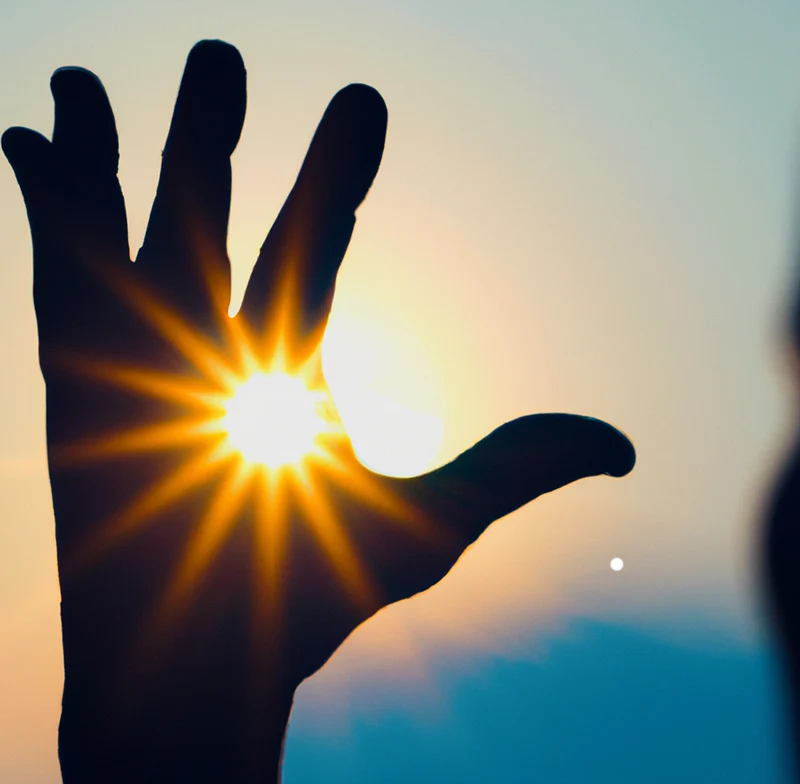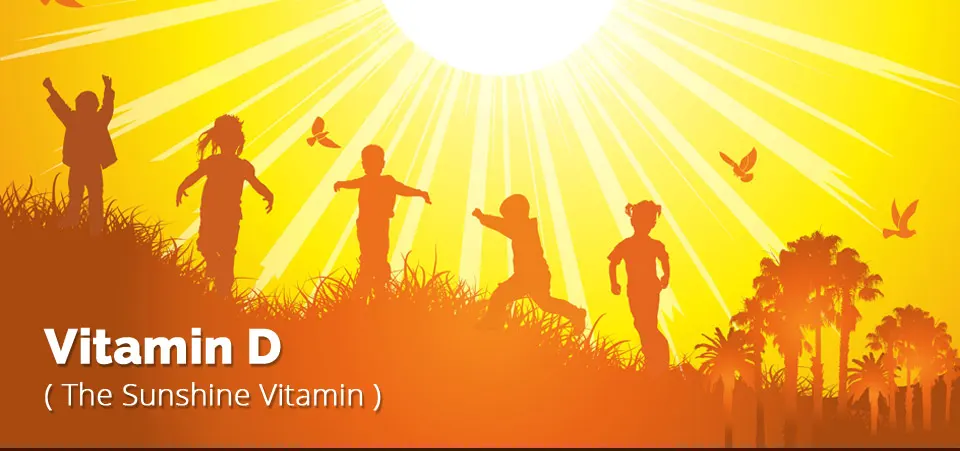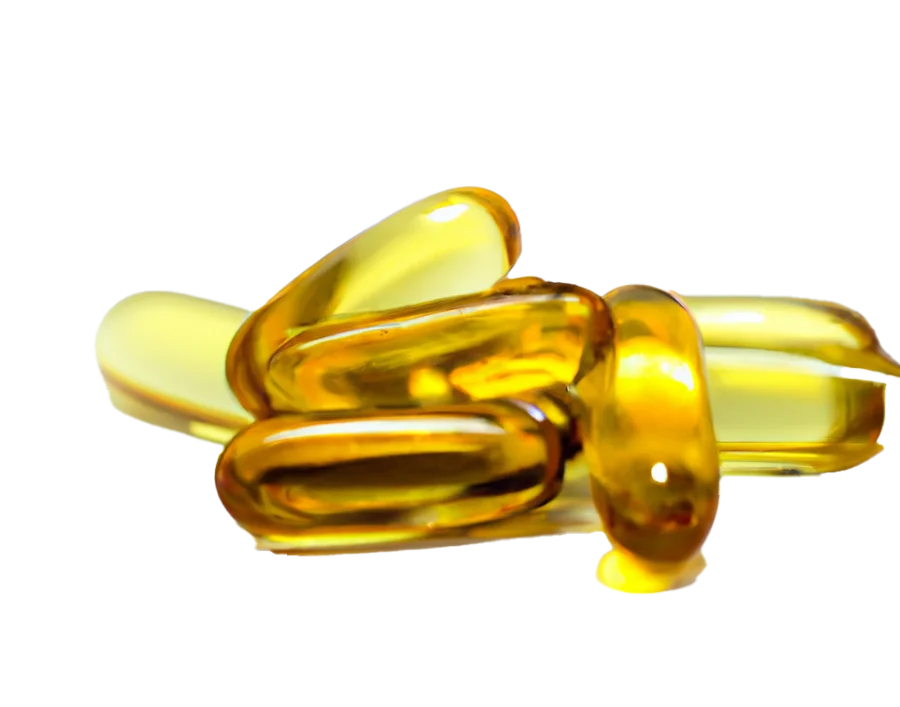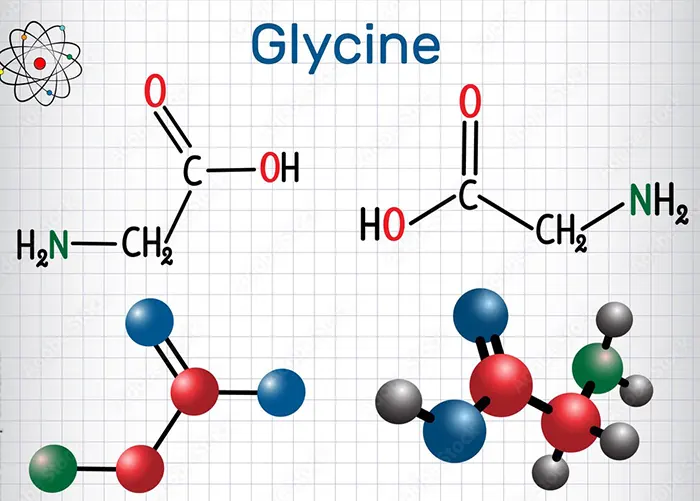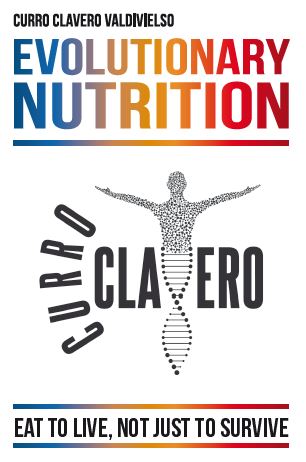Quiet, I have not gone mad; I know perfectly well that the vitamin “L” does not exist. It is only a metaphor.
As I promised, I made a pause in the writing of my next book to share with you a key issue if we want to lay the foundations for global health is optimal.
Since it was released a study late last year on how an exhibition inadequate light can promote the psychiatric disorders, I’ve been wanting to write an article about it. This theme, like that of the proper hydration that I tried in a previous article I think it is underestimated. The majority of the people not given the attention that it deserves, despite its enormous impact on circadian rhythms, sleep quality, and, consequently, our mental and physical health. I suppose this lack of attention is due in part to the lack of knowledge (just what I try to counteract this article), but it also seems that the simple, making it easy to fix and it does not cost money, does not attract us as much as the latest technology, gadget, drug or supplement that promises miracles.
This topic goes beyond the Pareto law; I think that is in that 10% of the shares that generate 90% of the benefits. However, we remain concerned by the millions of details that just add to the whole, as if it is best to eat fruit before or after meals, whether L-carnitine will help you ‘burn’ more fat, or if the melatonin will make us sleep better, among others. And, meanwhile, we ignore what is really important.
If it comes from nature and is free of charge, such as sunlight and water, or very inexpensive, as the salt or the sodium; if it is a process or mechanism that has evolved and been perfected with us over millions of years, as listening to our bodies and respond to our feelings; or if it is an ancestral practice, to which we are genetically adapted, as to consume natural foods, stay active, adapt to different temperatures and to expose ourselves to the light naturally, then, often, it seems that does not impress us. What has been essential to our survival and evolution is considered less attractive than the modern solutions. In order to…
Let’s go to the topic.
The Study
It is a research conducted with approximately 87.000 participants for almost two years, carried out by institutes of mental health, and brain, as well as centers of circadian disturbances, and sleep disturbances of various universities in Australia, the United Kingdom and the united States. The objective was to determine whether the disruption of our circadian rhythms caused by the exposure unnatural to the artificial light in the present, constitutes an environmental risk factor for psychiatric diseases.
The circadian rhythms are biological cycles of approximately 24 hours that regulate physiological functions and behaviors in living organisms, such as the sleep-wake cycle, feeding, body temperature, and hormonal activity, among others.
The results of the study revealed the following:
- Increased risk with night light: increased exposure to artificial light during the night was associated with an increase of up to 30% in the risk of developing disorders, such as depression, anxiety, post-traumatic stress disorder, psychosis, bipolar disorder, behaviors of self-harm, as well as a deterioration in mood and general well-being.
- The benefit of the daylight: An increased exposure to natural light during the day (sunlight) is linked to a lower risk of suffering from the psychiatric conditions mentioned above.
In addition, the study highlighted two key points:
- Independent associations and synergistic: The two associations (too much light at night and poor daytime) they were independent but are fostered each other. That is to say, they could be presented separately, but if both occur simultaneously, the severity of the disease intensified.
- Dose-response effect: The symptoms worsened proportionally with increased exposure to light at night and less exposure to daylight.
There are two exceptions important:
- Bipolar disorder: people with bipolar disorder, the increased exposure to light at night is harmful, regardless of the amount of daylight they receive.
- Psychosis: In cases of psychosis, we observed the opposite: a strong reduction of psychotic symptoms, as did exposure to daylight, regardless of exposure to light at night.
The study concludes that ‘avoid the light during the night (darkest of nights) and search for light during the day (brighter days) is an intervention non-pharmacological simple, free, easy-to-implement and effective to significantly improve the mental health. To address this deviation from our natural cycles of light and darkness could improve overall mental health in industrialized societies’.
In the practical part of this article, we will explore the possibilities and methods at our disposal to facilitate this adaptation, since our current lifestyle, in which we spend more than 90% of the day indoors, it takes us in the opposite direction: our patterns of light exposure are less intense during the day and more intense during the night, in comparison with the natural patterns that we have lived throughout our evolution.
The results of this study, although useful as evidence for the skeptics, should not surprise us. I think we all sensed that in times when the days are shorter (less total light at the end of the day) or on rainy days or gray (lower light intensity), our courage is not the same as that in times of increased access to light. This is known as Seasonal Affective Disorder. Hence, in countries or regions are sunnier and with greater luminosity, people tend to have, in general, a character more cheerful in the most northern areas.’re in the most northern areas.
Biological Mechanisms
In the retina, we have some proteins called opsins, which perform two functions key:
- Capturing the light: they act as photoreceptors.
- React to that light: generate and send signals to the brain.
Depending on the type of opsin, some signals to help us in the vision and in the regulation of our circadian rhythms and biological, influenced by the color and intensity of the ambient light they receive.
Opsins of vision
- Opsins cone: they Are responsible for colour vision and the details in conditions of good lighting. There are several types of opsins of cone, each responding to a specific range of wavelengths (colours). The more relevant to our current topic are:
- Long-wave light: Responds to colors ranging from orange and red, typical of sunrise and sunset.
- Short wavelength light: Known as blue light, predominantly in the daylight bright.
- Opsins of cane: they Are essential for night vision and light perception in low light conditions, but only allow you to see in black-and-white.
Opsins are NOT forming images
These opsins are less abundant and don’t contribute to the vision as such, but are critical for the regulation of circadian rhythms and other physiological processes. Among them, we are particularly interested in the melanopsin.
Melanopsin is found in a specific type of cells called ganglion, or more precisely, in the ganglion cells are intrinsically photosensitive retinal. These cells line the back of the eye, and they play a crucial role in how our body responds to the light, regulating not only the sleep-wake cycles, but also other biological processes key.
Circadian rhythms and physiological processes
As soon as these cells receive light, they react to the type of wavelength (color) of the light and send signals to the hypothalamus, specifically the suprachiasmatic nucleus, which is where you will find our circadian clock master. This clock regulates and synchronizes our biological rhythms. Basically, these cells tell the clock: “you are now the dawn is breaking, now it is day, it is now dusk, and now it is night”. Based on the information received, the clock sends signals to the body to adjust their roles: “the dawn is breaking, it raises the body temperature, heart rate, and cortisol levels because it is time to wake up and face the day; it is dusk, decreases cortisol and releases melatonin because it is time to prepare for sleep and rest”, among many other aspects (study). Important, right? Because the subject does not end here.

Cognitive functions
After, the suprachiasmatic nucleus sends information to the hippocampus, a brain region involved in cognitive functions such as learning and memory. The activity of the hippocampus is modulated by circadian rhythms, which have a direct influence on synaptic plasticity, i.e. how the connections between neurons are strengthened or weakened, essential for learning and memory.
Moods
If all this were not enough, in 2018, a study discovered another relevant fact: these retinal cells also send signals to other parts of the brain, like the amygdala and habenula, which are deeply involved in depression and mood states. The habenula plays a crucial role in the modulation and release of key neurotransmitters in the regulation of mood, such as serotonin, dopamine, and norepinephrine. In addition, the habenula influences on motivation, emotional processing, decision making, and responses to stress and pain. In summary, an exhibition inadequate to the light affects directly and adversely affect our moods, favoring the onset of depression and other mental illnesses.
Importance of time of exposure to light
We can get an idea of the importance of the proper functioning of this system. Probably one of the mechanisms best evolutionarily conserved, present in all living beings, from unicellular organisms to the most complex like us.
In addition to our retina receives, at the appropriate times, the signals corresponding to the wavelength of the light (orange/reddish at sunrise/sunset and blue during the day), another relevant factor is the amount of time spent exposed to the natural light of the sun and its intensity. The circadian clock sum photons (particles of light) and measures the total amount of light received during the day (study). It is not the same to be exposed for 30 minutes on a cloudy day to three hours on a sunny day. In the same way, you can occur the same effect whether it spends little time under very bright light as if it is a long time on a grey day; that is to say, no matter if it receives a lot of light in a concentrated way, or little things for a long time. At the end of the day, only the total amount of light received, and the more the better (until the sun sets).
The longer we are exposed to the outside light during the day, we experience a better mood, a better quality of sleep, a lower risk of depression, less emotional instability, reduced use of drugs, more pleasure and satisfaction in what we do, the more desire to make things and less fatigue (study).
Melanopsin beyond the retina
The issue does not end here, because, curiously enough, not only we have melanopsin in the eyes, but also in other tissues of the body:
- Adipose tissue: It has been shown that exposure to blue light daytime reduces the size of fat cells. On the contrary, the lack of daylight contributes to adipose tissue dysfunction, as well as overweight and diabetes (study).
- Blood vessels: The light blue sun causes the relaxation of the blood vessels through a pathway independent of the nitric oxide. This lowers blood pressure and improves blood flow, optimizing the supply of oxygen and nutrients to the tissues, in addition to facilitate the elimination of waste (study).
- Skin: The activation of melanopsin in the skin by the blue light offers protection against damage by UVA radiation (study) and could help to prevent melanoma (study).
All of this information, we will put them on notice that an inadequate light exposure not only affects the mental health, but has an impact at the systemic level and to our longevity. This has been demonstrated by the recent study of 2024 that captured 13 million hours of data from light sensors used by 89,000 people older than 40 years, concluded that: ‘those nights the brightest and darkest days had a higher risk of premature mortality, after taking into account socio-demographic factors and life-style.’
Summary
If our retina does not receive adequate information about the time of the day in which we find ourselves (through the wavelength of the light, i.e., the color), our circadian rhythms will be deregulated. This deregulation affects negatively to three essential functions: 1) the physiological (such as the proper hormonal secretion, and sleep quality), 2) the cognitive (memory and learning); and 3) mental health (mood, and mental illnesses such as depression, schizophrenia, bipolar disorder, anxiety, among others). In addition, given that the melanopsin is also found in other parts of the body, its activation by a sufficient exposure to the blue light day in the sun (and the restriction of the night) improves metabolic health and cardiovascular disease, in addition to the functions of physiological, cognitive, and mental mentioned above.
This is all you get “only” with a light exposure similar to that experienced by our ancestors and with which we have evolved over millions of years. The same thing happens with the food, movement, etc, do We sound?
PRACTICAL PART
In the theoretical part, we have seen that, in terms of the light and the adequate exposure to it, there are three aspects are fundamental to positively impact our overall health (or, at least, to avoid a negative impact):
- The wavelength of the light: Get each color of light in his right moments.
- The amount of light: how Many photons (particles of light) we receive throughout the day. During the day, the more, the better.
- The intensity of the light: As in lux. High intensity during the day and very low at night, once the sun has set.
Ideal vs. What we Do
Knowing this, the ideal would be an exposure to the light as close as possible to that experienced by our ancestors for millions of years of evolution. However, the style of life in industrialized societies leads us in the opposite direction to what our body needs and expects. We’re going to analyze in function of the four phases in bright main day.
Dawn
The ideal
Exposed to light, reddish/orange (long-wave) of the dawn has a big impact on the regulation of circadian rhythms, as advanced by these rhythms, making us wake up early and we sleep early in the night. In addition, this exhibition morning positively affects the regulation of biological cycles key, as the hormonal and enzymatic. The intensity of this light is about 100 lux just when the sun rises, increasing to 500 lux for 30 minutes after.

What we do
It is common that during the sunrise we are asleep, or awake but inside of our homes, which prevents you from start to synchronize our biological rhythms-the natural way. This causes a delay in those rhythms, which leads us to go to bed later. As a result, we rely on the alarm clock to get up, interrupting our sleep (crucial to the rest and repair systemic) and letting the tiredness accompany us throughout the day.
By Day
The ideal
During the day, it is optimal to spend a lot of time exposed to blue light (short wave). This activates the maximum melanopsin, which is beneficial for the mental health and cognitive function. The higher the intensity of the light and the longer we are exposed to it, the better. Although this exposure does not directly affect the circadian rhythms, its impact on our health is significant. The intensity of the daylight reaches around 10,000 lux mid-morning and mid-afternoon, reaching up to 15,000 lux at solar noon on a day with skies means clear, looking in the opposite direction to the sun. On a sunny day and looking directly at the sun, the light can overcome the 100,000 lux.
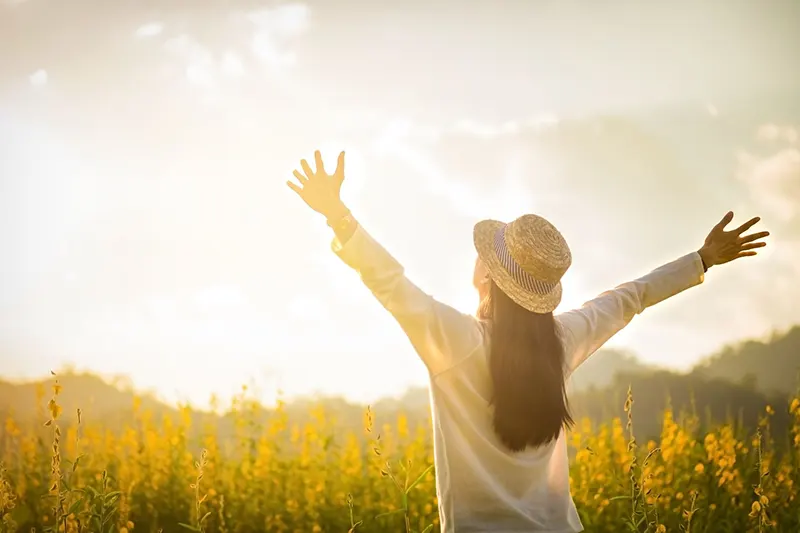
What we do
Instead of taking advantage of the natural light, we often spend the day indoors with artificial light, much less intense. Even when the natural light comes through the windows, the ultraviolet B rays are filtered out, which further reduces the intensity of the light and alters its spectrum, in addition to preventing the synthesis of vitamin D. In the best of cases, in a light-flooded interior with large windows, we can get to about 3000 lux intensity if we are in front of them, decreasing to about 200-500 lux if we are back.
Dusk
The ideal
Exposed to light reddish or orange-red (long-wave) of the dusk it is essential to regulate circadian rhythms, although in the opposite direction to the dawn’s early light: the light of dusk tends to slow down these rhythms, making us wake up and feel sleep later. The exposure balanced in both lights helps maintain circadian rhythm healthy. If someone want to move their rhythms because it has difficulties to sleep early and waking up with energy, should be exposed to the light of the sunrise and avoid the dark. On the contrary, those who prefer to delay their circadian rhythms should do the opposite. The intensity of this light is about 2,000 lux 30 minutes before sunset, decreasing to about 200 lux during the commissioning itself.
What we do
Although in this phase of the day tend to have more opportunities to be outdoors, most people continues in interiors, whether at home, in the car, at the gym, or even at work.
For the Night
The ideal
It is ideal to minimize the exposure to artificial light night especially the light blue. It is clear the melanopsin as much as possible. The less light we receive for the night, and the less intense it is, the better it will be for our health. Although the blue light of the day does not directly affect the circadian rhythms, the exhibition night to this light does affect the quality and duration of sleep, as well as the risk of developing certain mental illnesses. In a natural environment, for the night, the light intensity is practically zero (zero lux); and in a night of full moon and clear, the light barely reaches 0.5 lux.
What we do
When we need to reduce the exposure to the light, we are still using artificial lights in the house, in addition to the screens of technological devices such as mobile phones, tablets and computers. At home, with artificial lights, we can be exposed to about 400 lux, and if we look at the mobile screen, we add other 400-500 lux. In addition, we are not only exposed to a higher intensity of light, but this light is blue (similar to sunlight), which confuses our brain and makes you think that it is still day, inhibiting the release of melatonin and maintaining high levels of cortisol, which impairs your sleep and well-being.
Summary
We are exposed to an insufficient amount of light during the day (deficit), too much light during the night (surplus), and lack of exposure to light reddish or orange of dawn and dusk. This deregulation in our exposure to the light is causing a disruption of our circadian rhythms, negatively affecting the timing of our biological rhythms. As a result, increase the risk of fatigue, low moods, and mental illness.
Strategies to Minimize the Damage
Having said all the above, you have to be realistic: for 99.99% of us, it is virtually impossible to completely change our way of life. Therefore, the goal should be to minimize the damage.
By Day
Force to be outdoors more
Although initially it may seem, we can always get better organized and to make a conscious effort to try to spend as much time outdoors as possible. Any moment is right, whenever we can; if possible, at dawn and dusk, the better, and if not, during the day. At solar noon, the sunlight’s intensity is greater, which makes it a far more effective: in less time, we can accumulate more photons. Always that we are not required to be at work, at home or in a car, we should try to be outdoors. As we already know, there is an upper limit: the longer, the better.
Reduce the use of sunglasses
The sunglasses are designed precisely to reduce the amount of light that reaches our eyes, that is to say, act in the opposite direction to what we want during the day: accumulate the maximum photon. Depending on the category of the glasses, which varies from 0 to 4, filtered in more or less light; category 3, which will usually be the most common, filtered between 82% and 92%. This does not mean that you can not use it never. If we are in a day especially brilliant, in particular with the sun in front, and even more so if we are driving, then it is advisable to use them. The message is to avoid to use them by habit, and do it only when you really need it.
Increase the light in the interior
For situations in which, for various reasons, it is impossible to be exposed to the outside light, the aim should be to artificially increase the lux on the inside where you spend most of the day, which will typically be our working space. The more luminous it is, the better. This can be accomplished in two ways:
- Increasing the amount and strength of the lights available, and making sure that they are white lights/cool (color temperature = 6500 K), the most similar to the natural light of the day.
- Using a lamp luminoterapia on your desktop (type, this , or this), designed especially for this purpose, to reduce the deficit of daylight.
For the Night
Reduce the intensity of the artificial lights
It is recommended to decrease the intensity of the lights in the house for the night. There are already devices that can regulate the intensity of the lights in our homes. However, if we do not have one, we can always choose to use the minimal light is essential for us to allow them to perform the tasks that we have pending.
Use lights warm
You try to lights are from a temperature as warm as possible (<2700 K).
Use glasses blockers blue light
The blue light from digital screens and artificial lights in the house can fool our brain into believing that it is still day, which can interfere with the production of melatonin, the hormone that we need to sleep and that in addition it is a potent antioxidant molecule and anti-aging.
Reduce the light from electronic devices
The light of the mobile phone, you can issue between 500 and 1000 lux to 20 cm of our eyes. We have two options to minimize this damage:
- Lower the intensity (brightness) to the minimum possible.
- Use the filter options of blue light that bring mobile phones and tablets, in which you can configure the waking hours (for example, from 19:00 to 07:00 pm) and the filter level (select the maximum). This function is usually found in the settings, under “Display and brightness” -> Android: “in the read mode or night light”, and iOS/iPhone: “Night Shift”.
Well, we have a third option, which is even better: don’t use mobile at night. Not only from what has been said above, but because what we do with it (social networks, reading news, etc) activates the brain, keeping cortisol levels high and inhibiting melatonin, just the opposite of what we need to prepare the body for a good night’s sleep.
Software usage adjustment of light on PC or laptop
If you have to use a PC or a laptop, there is a free software very useful called “f.lux”. This automatically adjusts the color temperature and the brightness of the screen according to the time of day, reducing the emission of blue light, and changing to warmer tones, or red as evening approaches. It also allows you to customize the settings according to the preferences of the user, and geographical location to synchronize the changes with the hours of dawn and dusk local.
Summary
Something so simple to fix, and cheap like to receive more light during the day and less during the night should not have excuses to not be carried out. We have already seen how this affects the proper regulation of our physiological functions (hormones, etc), sleep and rest, our mood, learning, cognition, memory, and reducing the risk of many mental illnesses. There is nothing.
***
PD: For the geeks and curious like me, there are applications for the mobile (I use a call Lux Light Meter Pro) that measure the amount of lux are getting your eyes in a moment or a particular environment. If you are interested in assessing your environment, indoors and compare it with what you’d have in one outer/natural at the time, these applications can be very useful. The application uses the light sensor of the mobile phone, which is in the front part (the top of the screen), so that the ideal is to put it to the height of the eyes, and with the screen in the direction in which you look. What was said: the top-level of frikismo.





